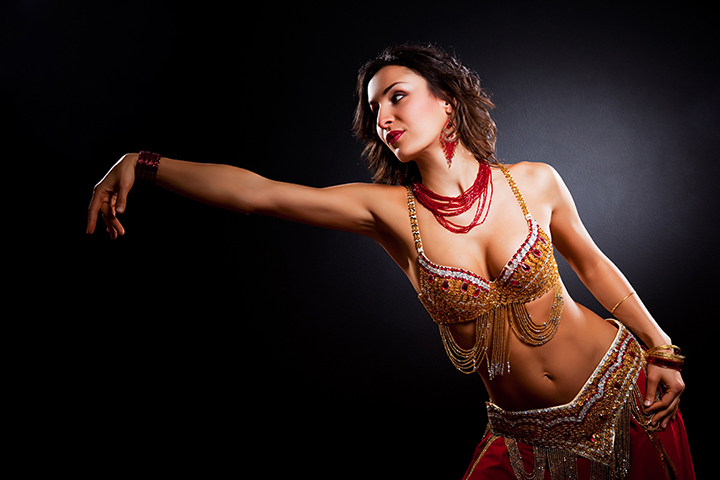Belly Dance
History
Belly dancing has a long history but not a lot is known exactly where it originated and how it started. It is considered a folk dance in the Middle East that has grown considerably in popularity in the western nations. There are a few Greek and Roman documentation of a similar dance that uses writhing movements of the torso seen in Asia Minor and some European countries like Spain.
Later in the 18th and 19th centuries the dance we know today as belly dancing is extensively documented by visitors to the Middle East.

The dance
The belly dance is done as a folk dance or as a performance dance.
Folk dance or social dance
This dance is done by groups at social gatherings. It is done by people with little or no experience and they wear their everyday clothes and not fancy costumes. Men, women and children will perform this dance.
Performance dance
This dance is performed by women in costume, often with a bare midriff. This is a more polished dance performance.
Middle Eastern versions
- - Egypt-three forms of the dance is seen here, the traditional folk dance, classical dance and cabaret dances. This version is more formal and constrained than the Turkish version and can be quite sedate in nature. There is no floor work as it was banned in the middle of the 29th century.
- - Turkey-the dance here is more energetic and more playful. Here it is called the Oryantal or the Oryantal Tansi. The dancers are athletic and often use little finger cymbals during the dance to accentuate the beat. Floor work is still done in Turkey and is an important part of the overall dance. Many of the best dancers in turkey are of Romani descent. This version has a different time signature that is 9/8. This is more of the version we are used to seeing in western cultures.
Western Belly Dancing
Belly dancing became popular in the western countries when the life of harems was romanticised. It was performed at World Fairs and was introduced to a whole new audience. It was called eastern or oriental dancing.
It was during the World Fair in 1883 in Chicago that the term Belly Dancing was first used by Sol Bloom the director of entertainment at the Fair.
Since then the dance has become popular as form of exercise as well as an exhibition dance.
Costume
The usual dress is a bra style top and a long skirt or the bra style top and harem pants. The costumes are often embellished with jewels, coins, beads and tassels and fringes. The pants or skirt reveals the belly button and is often studded with a jewel.

